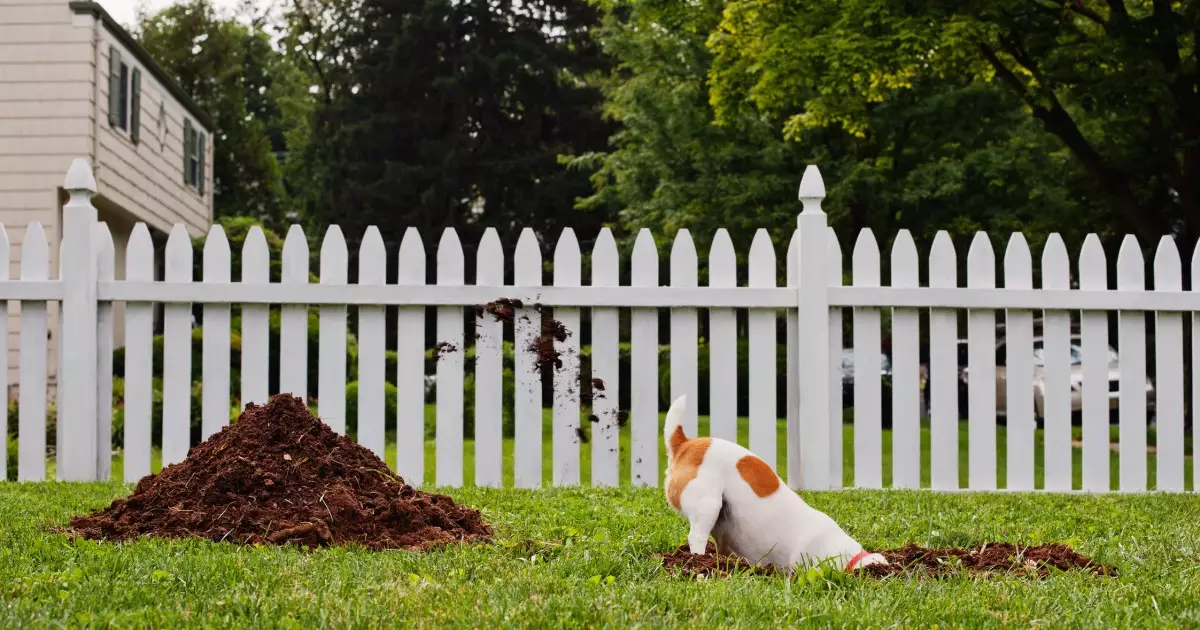When we observe dogs engaging in the act of digging, it often seems both amusing and astonishing. With remarkable speed and agility, dogs can create sizable holes in no time, leaving pet owners both captivated and occasionally exasperated. Understanding the underlying motivations behind this behavior is crucial. This article aims to explore the various reasons dogs dig, the breeds that may dig more frequently, and some strategies to manage this instinctive behavior.
Digging in dogs can often be traced back to their wild ancestors whose survival tactics relied heavily on this behavior. In the wild, dogs and their forebears would dig to create shelters, providing protection from the elements. They also dug in search of food, as many creatures, from roots to small mammals, reside underground. This inherent behavior remains a part of domestic dogs, even if the context has changed.
Today’s dogs may exhibit digging behavior for various reasons. Some breeds are more prone to dig due to their genetics and the roles they were originally bred to fulfill. Terriers, for example, have historically been bred for hunting small prey that resides underground. Their instinct to dig has been selectively reinforced throughout generations, making them prominent diggers.
Beyond instinct, digging can also signal boredom or anxiety in dogs. Dogs that lack sufficient physical exercise or mental stimulation may turn to digging as a way to entertain themselves. Breeds like Border Collies and Shetland Sheepdogs, known for their high energy levels and intelligence, require ample interaction, engagement, and structured play. Without it, they may resort to destructive behavior, including digging.
Moreover, certain dogs may dig as a result of anxiety. Under-socialized dogs or those suffering from separation anxiety may dig as an outlet for their stress. The hole dug becomes a desperate plea for release from their unease. This behavior is particularly prevalent in dogs that have not been accustomed to being left alone or to being exposed to various social situations.
Interestingly, climate can also influence why certain breeds dig. For instance, breeds adapted to colder climates, such as Huskies and Malamutes, might dig to create a cool resting spot on a hot day. Conversely, they may also dig to uncover warm ground when the weather is chilly. It’s important for owners of these breeds to understand their needs and provide appropriate environments to mitigate unwanted digging behaviors.
To accommodate these instincts, pet owners should also be aware of how their pet’s environment influences their digging habits. Outdoor spaces can often trigger instinctual behaviors; hence, creating a designated digging area can channel this behavior positively.
Providing an outlet for a dog’s digging impulse can be beneficial for both the dog and the owner. One effective method is to create a designated digging pit, filled with sand or soft soil. Hiding toys or treats within the pit can entice dogs away from harmful digging behaviors while also satisfying their need to dig. This kind of play not only channels their instincts in a controlled manner but also serves as quality mental stimulation.
Additionally, regular exercise and interactive play are vital in curbing these tendencies. Long walks, vigorous play sessions, and engaging games can help tire the dog physically and mentally, reducing the likelihood of unwanted digging.
Moreover, spaying or neutering dogs can help alleviate breeding-related digging behaviors. Unneutered males may dig in attempts to escape their enclosures to seek out a female in heat. Addressing this issue can contribute to a calmer, more well-adjusted pet that digs less frequently.
Understanding why dogs dig is essential for nurturing their well-being. By recognizing the instinctual roots of digging and addressing potential causes such as boredom or anxiety, owners can foster a harmonious environment that caters to their dogs’ needs. Creating designated spaces for digging, ensuring regular exercise, and considering spaying or neutering will go a long way in managing this entrenched behavior. Ultimately, with proper understanding and engagement, pet owners can turn a seemingly problematic habit into an enjoyable activity for both the dog and the owner.

